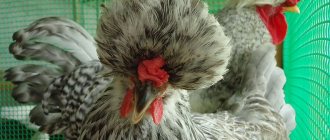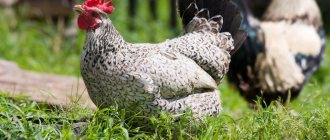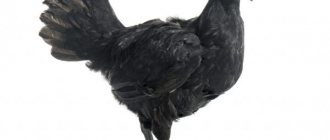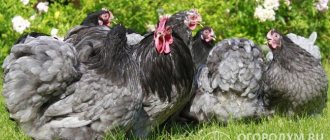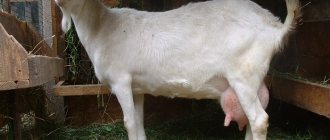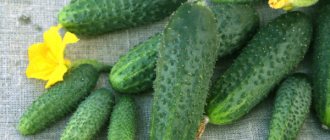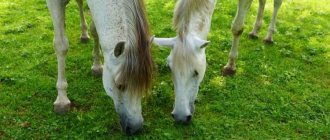Until 1965, in the USSR, only Russian white chickens were used as egg-laying chickens. Their average productivity was almost 190 eggs per year, weighing 60 g. In breeding poultry farms, breeders managed to breed Russian white chickens with an egg production of 200 or more eggs per year.
Unfortunately, under conditions of industrial use, this breed has become uncompetitive with foreign white Leghorns. According to rough estimates, Russian Whites were inferior to Leghorns in productivity by 50 eggs per year, and in total mass of eggs - by 3 kg per year.
Due to low competitiveness, the number of this breed in 1990 decreased to 3 million individuals (in 1975 it was almost 30 million individuals). Now this breed has retained its former population in the territory of Turkmenistan, Azerbaijan and Uzbekistan.
Russian breeders continue their work on this breed, hoping to somewhat improve its egg production and endurance. It is expected that in the future Russian white chickens will be able to better compete with their foreign counterparts.
Description of the Russian White breed
The Russian white breed of chickens is characterized by the following exterior characteristics:
- The head is of medium size and well developed.
- Roosters have a large leaf-shaped comb with five teeth.
- The comb of chickens hangs slightly to one side.
- Strong yellow beak.
- White earlobes.
- Thick neck of medium length.
- The chest is convex and wide.
- An oblong body and a wide back.
- Volume belly.
- Well-developed wings fit well to the bird's body.
- The legs are yellow, there is no feathering.
- Well developed tail of moderate length.
All birds of the Russian White breed have the same color . Day-old chicks are completely covered with yellow down, which is replaced by white feathers as they grow older. During the selection of Russian white chickens, any deviation from the standard is not allowed. Birds similar to Leghorns must be culled.
Peculiarities
This is an egg-laying breed that is kept on poultry farms solely for the sake of good egg production .
In addition, Russian white chickens were specially selected for resistance to neoplasm microorganisms. That is why they are of interest to the entire biological industry involved in the production of safe drugs.
This breed can be used on both large farms and small farms. It is well suited for beginning poultry breeders, as it does not require serious care and attention.
Chickens of this breed are resistant to all common diseases, so the survival rate for adult birds is approximately 91%, and for young birds - 96%.
Advantages
Chickens of Russian breeds are mainly raised on private farms and at home. They have a number of advantages suitable for successful breeding in Russia.
First of all, resistance to frost, high resistance to various infections and other types of diseases (viral, fungal).
To survive temperature changes, Russian chickens are forced to accumulate additional subcutaneous fat. This makes the meat soft and increases the beneficial properties of chicken dishes.
Photo
Here in the photo is a young rooster in his cage. A little scared of the camera...
Here you see a photo of Russian White chickens calmly sitting on a stick:
And this is a very young individual walking in the fresh air:
One chicken weighs only 43 grams:
Recently hatched chicks:
Beautiful photo of chickens climbing onto a container:
Well, this is a familiar situation for White Russians:
Breeding
The Russian White has practically lost its brooding instinct, so breeding is most often possible by incubation. Eggs no older than 2 weeks are suitable for laying.
The most suitable month for hatching chicks is April. Hatched chicks require good lighting and warmth. For 13-15 chicks it is necessary to provide an area of 1 sq. m.
At first, young animals can be kept in cardboard boxes, above which heated lamps are installed. The chicks are ready for walking at 1 month of age. To do this, set up a separate enclosure from adult chickens.
Newborn chicks are fed cottage cheese, eggs, yogurt, and green onions. Boiled millet is introduced into the diet every week. You can also find specialized feeds on sale, which are given from 1 week of life.
You can tell the difference between hens and cockerels at 2-3 weeks of age. Males have larger scallops and are red in color. In females they become pink with a yellowish tint.
Maintenance and cultivation
There are several possible options for keeping Russian White chickens. Each of these methods has its own advantages and disadvantages, which should never be forgotten.
Birds of this breed can be kept on rough bedding . This option is ideal for owners of large plots. It consists of keeping chickens in a special room, the floor of which is covered with coarse bedding. Russian white chickens should spend most of their time walking.
At the same time, the owner of the site can save on feed, since the birds begin to collect pasture in the form of seeds, green plants and insects. However, you need to take into account the fact that the number of chickens should not be too large. Otherwise, the birds will trample the ground and eat all the insects.
The risk of developing any infectious disease may also increase. The fact is that over a large area it is very difficult to keep track of all the chickens, so the farmer needs to devote more time to his birds .
Moreover, a particularly curious chicken may run outside the property, where it can easily become prey to a bird of prey or a neighbor's cat.
Common pumpkin can prevent many diseases when consumed regularly. Growing and caring for pumpkins is not as difficult as it seems.
How sometimes you want to eat fried meat! Learn how to make your own brick BBQ by reading this article!
To prevent the birds from being endangered while walking, a small area of land adjacent to the chicken coop should be fenced off. Poultry farmers call it a “solarium.”
The soil on the plot must be hard, otherwise the farmer will experience difficulties during harvesting. Farmers should not make a dirt floor in the solarium, otherwise after rain it will turn into a dirty mess with a lot of germs.
Poultry breeders who do not have sufficient land area to keep Russian White chickens on coarse bedding should equip the chickens to be kept in battery cages.
This housing option allows the farmer to save space by placing chickens in a small area. In addition, this method simplifies the care of chickens, since the owner can make a round every day, checking the condition of the laying hens.
The floor of the coop will almost always remain clean, since the birds will spend all their time in the cages. At the same time, they will consume less grain feed, since they do not waste energy during walks.
Unfortunately, the cellular housing option has its drawbacks . Due to the lack of walking, the farmer must regulate the microclimate in the chicken coop.
Temperatures and humidity that are too low or too high can negatively affect the health of the entire poultry population. The relative air humidity in the room where Russian white chickens live should not exceed 70%
The air temperature in both cold and warm seasons should not go beyond -2 to +27 degrees. When the temperature drops significantly, the comb and earrings of Russian white chickens begin to freeze. The number of eggs laid is gradually decreasing, but the birds continue to consume feed, and in increased volumes.
During the heat, Russian white chickens begin to gradually refuse food, which in the future negatively affects the number of eggs laid. Due to exhaustion and lack of water, chickens stop laying eggs, causing inconvenience to the farm owner.
Feeding the chickens
In the early stage, Russian White chickens are fed the same as broiler chickens. All young animals are transferred to two- or three-phase feeding. As the chickens grow, the protein level in the feed is reduced, as adult chickens eat more feed.
Until the age of 8 weeks, Russian White chickens are not restricted in their food intake. After this, the amount of feed is reduced by 20%, but it is necessary to ensure that all chickens have equal access to feeders.
It is better to give small chickens not large food in granules, but its crumbs. It takes chickens more time to absorb such feed. In addition, the likelihood of pecking among young chickens is reduced.
From the 21st week, young chickens should eat like adults. The diet of adult birds is characterized by a high content of calcium salts. They contribute to the formation of eggs with a thicker shell, which prevents its deformation.
Young birds also need to be well prepared for the first laying of eggs. To do this, an increased amount of protein is added to the feed of Russian white chickens. With its help, their reproductive system and the egg follicle itself are formed faster.
Nutrition for adult laying hens
Adult Russian White chickens should be fed complete feed twice a day. In this case, under no circumstances should the feeder be filled to the top, otherwise the chickens will spill all the food. It is enough to fill the feeder only 2/3.
When feeding birds with wet food, you should always reduce the amount per serving . Chickens should consume all the feed within half an hour, because it quickly turns sour and the amount of biologically active substances in it decreases.
After eating the food, bird feeders must be washed, otherwise they will become a favorable environment for the development of pathogenic microorganisms.
Beginning farmers should know that from the first laying of eggs until the age of 48 weeks, the number of eggs laid by one hen increases rapidly. Because of this, the chicken should receive more food. Then there is a decline in egg production.
It reaches a minimum at the 48th week of the bird’s life. At the same moment, the Russian white chicken stops gaining weight, and the farmer can reduce the amount of feed.
On average, 120 g of dry food should be spent per laying hen per day. Over the course of a year, this figure is 44 kg. If green feed is included in the diet, the dose should be increased to 170 g. Thus, grain feed is saved, and the overall vitality and productivity of chickens increases due to the beneficial substances contained in succulent feed.
Incubation
Chickens are mainly hatched in an incubator, since chickens have a reduced brooding instinct. In the incubator for day-old chicks, it is recommended to maintain the temperature at 28-32 degrees.
To get a small number of chickens, you can lay eggs with chickens of other breeds.
Table of temperature and humidity modes
| Period |
